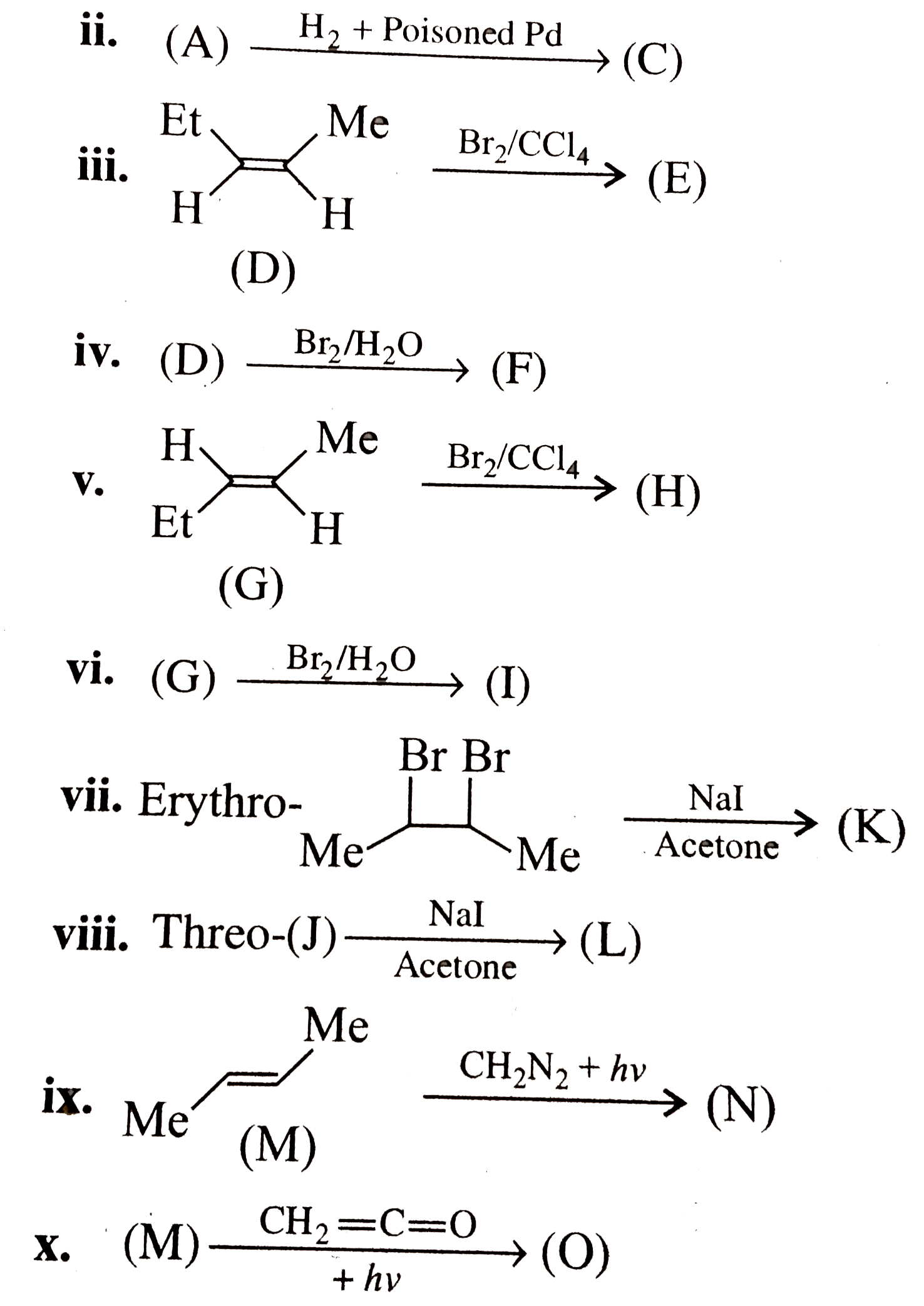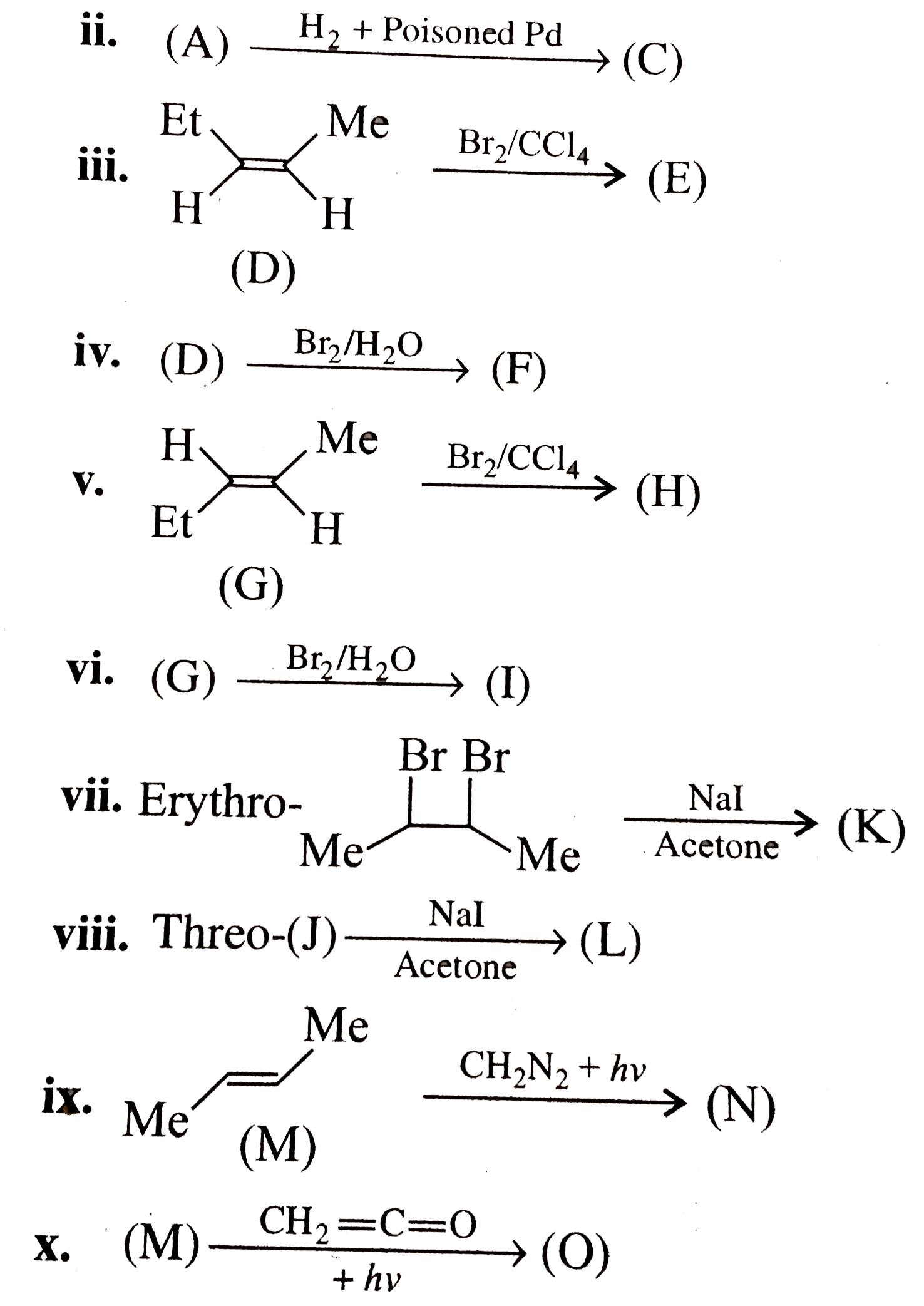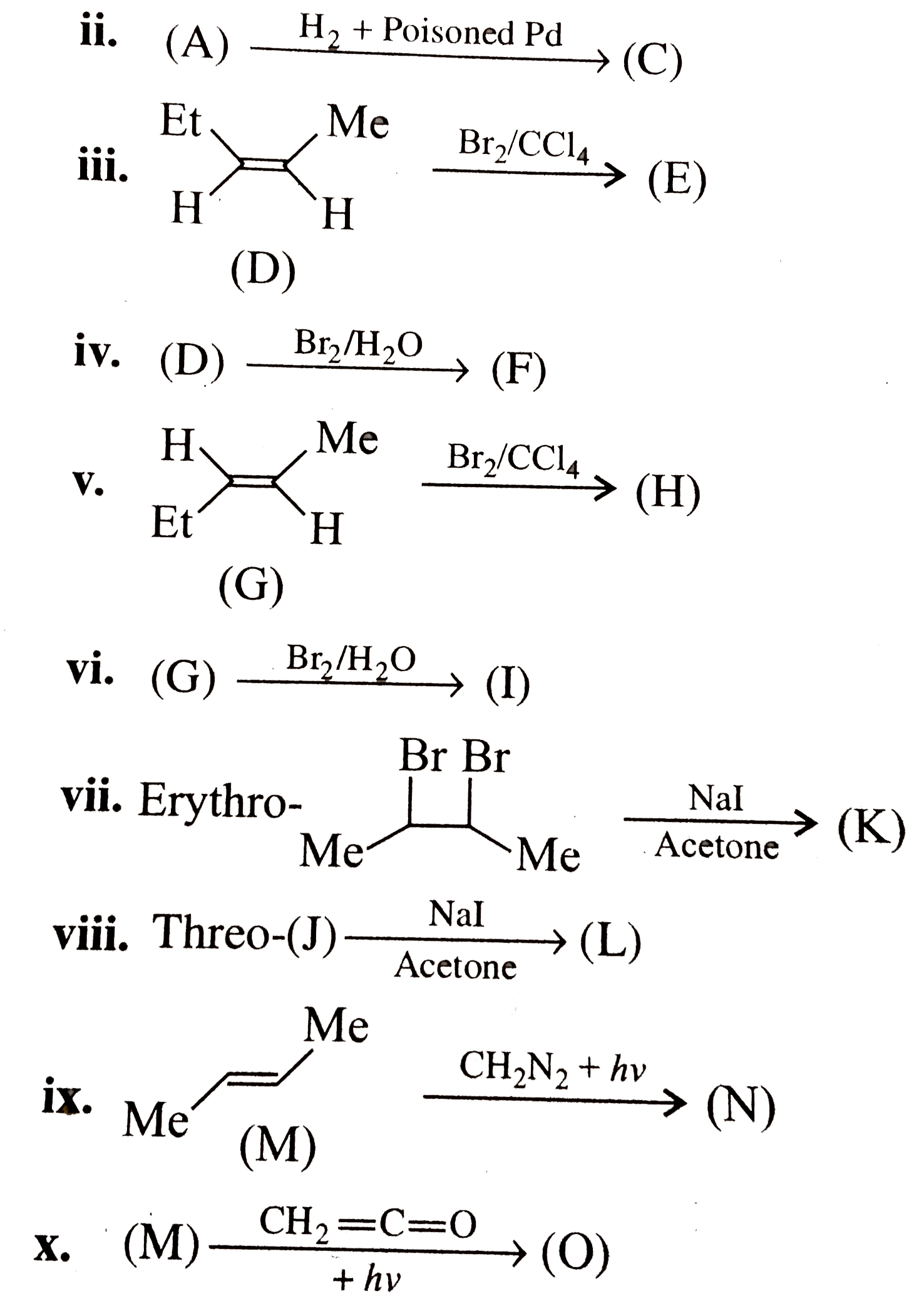In the conversion of alkyne to trans-alkene by Birch reduction using alkali metals (such as Na or K) in liquid NH3 and alcohol (MeOH or EtOH),
R−≡−RNa+liq.NH3−−−−−−−−→+EtOH 
the mechanism takes place in the formation of intermediate species in the following sequence:
(a) Radical anion → vinylic radical → trans-vinylic anion → trans-alkene
(b) Radical anion → trans-vinylic anion → vinylic radical → trans-alkene
(c) Vinylic radial → radical anion → trans-vinylic anion → trans-alkene
(d) Vinylic radical → trans-vinylic anion → radical anion → trans-alkene
The correct Answer is:A
Step by step video & image solution for In the conversion of alkyne to trans-alkene by Birch reduction using alkali metals (such as Na or K) in liquid NH_3 and alcohol (MeOH or EtOH), R - -= - R overset(Na +liq. NH_(3))underset(+EtOH)rarr the mechanism takes place in the formation of intermediate species in the following sequence: by Chemistry experts to help you in doubts & scoring excellent marks in Class 11 exams.
Updated on:21/07/2023Topper's Solved these Questions
- ALKYNESBOOK - CENGAGE CHEMISTRY ENGLISHCHAPTER - ALKYNESEXERCISE - Exercises (Archives - Single Correct Answer Type)
6 Videos
- ALKYNESBOOK - CENGAGE CHEMISTRY ENGLISHCHAPTER - ALKYNESEXERCISE - Exercises (Archives - Fill in the Blanks Type)
3 Videos
- ALKYNESBOOK - CENGAGE CHEMISTRY ENGLISHCHAPTER - ALKYNESEXERCISE - Exercises (Multiple Correct Answers Type)
25 Videos
- ALKENES AND ALKADIENESBOOK - CENGAGE CHEMISTRY ENGLISHCHAPTER - ALKENES AND ALKADIENESEXERCISE - Single correct Answer
14 Videos
- APPENDIX - INORGANIC VOLUME 1BOOK - CENGAGE CHEMISTRY ENGLISHCHAPTER - APPENDIX - INORGANIC VOLUME 1EXERCISE - chapter-7 Single correct answer
1 Videos
Similar Questions
Consider the following reactions :
IMe−≡(A)−MeNa+Liq.NH3−−−−−−−−→EtOH(B)
 .
.
Which statement is wrong about the reactions (i) and (ii) ?
View SolutionConsider the following reactions :
IMe−≡(A)−MeNa+Liq.NH3−−−−−−−−→EtOH(B)
 .
.
Which statement is wrong about the reactions (iii) and (iv) ?
View SolutionConsider the following reactions :
IMe−≡(A)−MeNa+Liq.NH3−−−−−−−−→EtOH(B)
 .
.
Which statement is wrong about the reaction (v) and (vi) ?
View SolutionConsider the following reactions :
IMe−≡(A)−MeNa+Liq.NH3−−−−−−−−→EtOH(B)
 .
.
Which statement is wrong about the reactions (ix) and (x) ?
View SolutionConsider the following reactions :
IMe−≡(A)−MeNa+Liq.NH3−−−−−−−−→EtOH(B)
 .
.
Which statement is wrong about the reactions (vii) and (viii) ?
View SolutionWhich of the statements are correct?
R−≡−R′Na+liq.NH3−−−−−−−−→+EtOH(A)Br2/CCl4−−−−−→B+C
where (B) and (C) are:
View SolutionTerminal alkynes (RC≡CH) are not reduced by alkali metals (e.g., Na, K, or Li) in liq. NH3, but reduction takes place when (NH4)2SO4 is added in the reaction mixture. Explain why.
View SolutionConsider the following reactions :
(I)Me−≡(A)−MeH2+−−−−−−→Pd+BaSO4?(B)D2/Pd/C−−−−−−→(C)
(II)Me−≡(A)−MeNa+Liq.NH3−−−−−−−−→+EtOH?(D)D2/Pt/C−−−−−→(E)
Which of the following statements are correct ?
View SolutionAlkali metals oxide are obtained by combustion of the metals.Although Na normally gives Na2O2,it will take up further oxygen at elevated pressure and temperature to form NaO2.The per and superoxides of the heavier alkalies can also be prepared by passing stoichiometric amounts of oxygen into their solution in liquid ammonia.
The different alkali metal oxides can be distinguished by reaction with water.The superoxides reacts with CO2 and give oxygen gas.The stability of per and superoxides is based upon that larger cation can stablise larger anion, due to larger lattice energy.
Alkali metals dissolve in liquid ammonia.Dilute solutions are dark blue in colour but as the concentration increases above 3M, the colour changes to copper bronze and the solution acquires the metallic lusture due to the formation of metal ions clusters.The solutions of alkali metals in liquid ammonia are good conductors of electricity due to the presence of ammoniated cations and ammoniated electrons.However, the conductivity decreases as the concentrations increases, since ammoniated electrons and ammoniated cation associate.
On dissolving smaller (less than 3M) amount of sodium metal in
liquid ammonia at low temperature , which one of the following
does not occur ?
View SolutionThe rate law expresison is given for a typical reaction, n1A+n2B→P as r=k[A]n[B]n2. The reaction completes only in one step and A and B are present in the solution. If the reaction occurs in more than one step, then the rate law is expressed by consdering the slowest step, i.e., for SNl reaction r=k[RX]. If the eraction occurs in more than one step and the rates of the steps involved are comparable, then steady state approximation is conisdered, i.e., the rate of formation of intermediate is always equal to the rate of decompoistion of the intermediate. Conisder the reaction:
⎡⎢ ⎢⎣I2k2⇐⇒k12I(rapid equilibrium)H2+2Ik3−−→2HI(slow)⎤⎥ ⎥⎦
If we increase the concentration of I2 two times, then the rate of formation of HI will
View Solution
